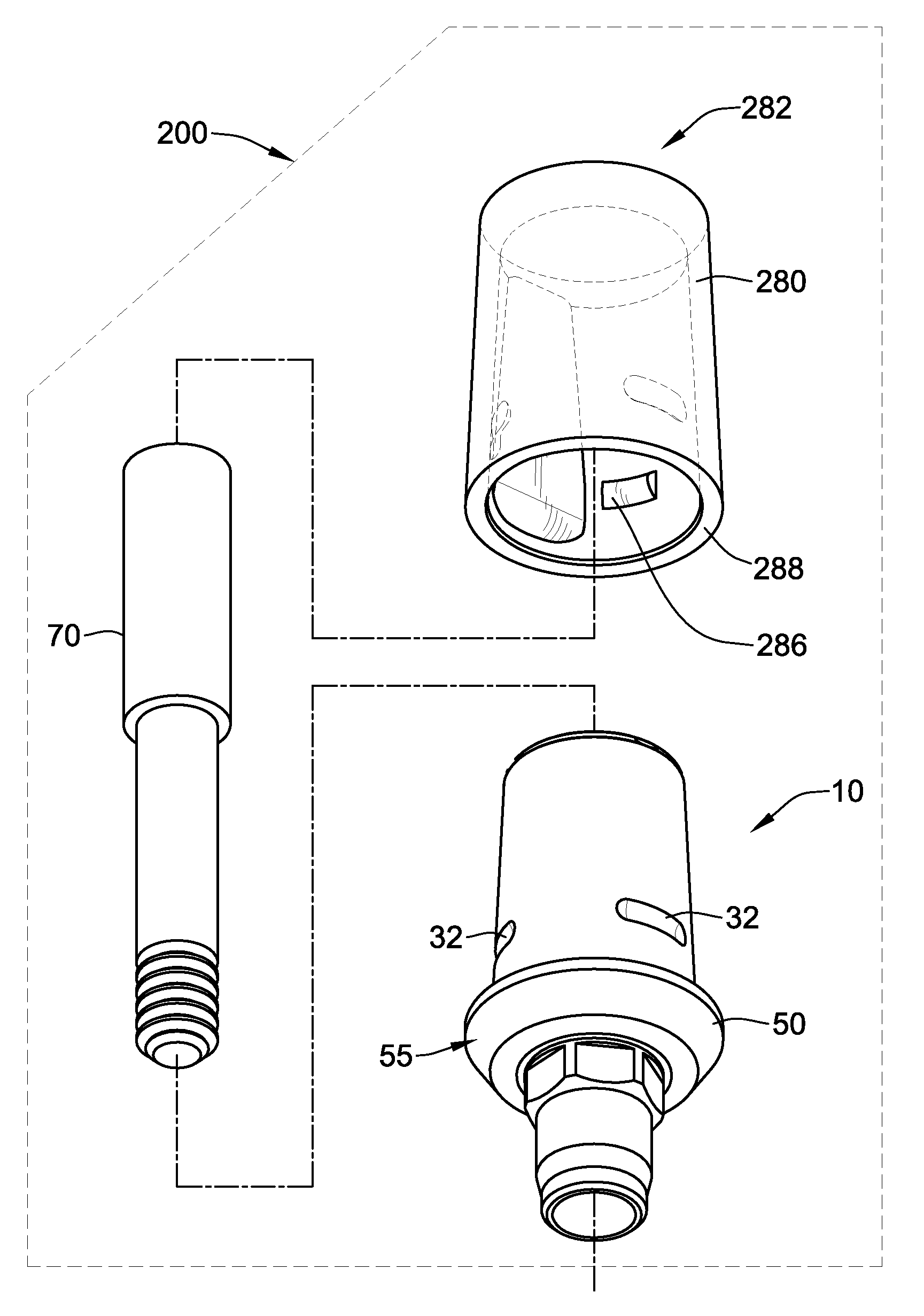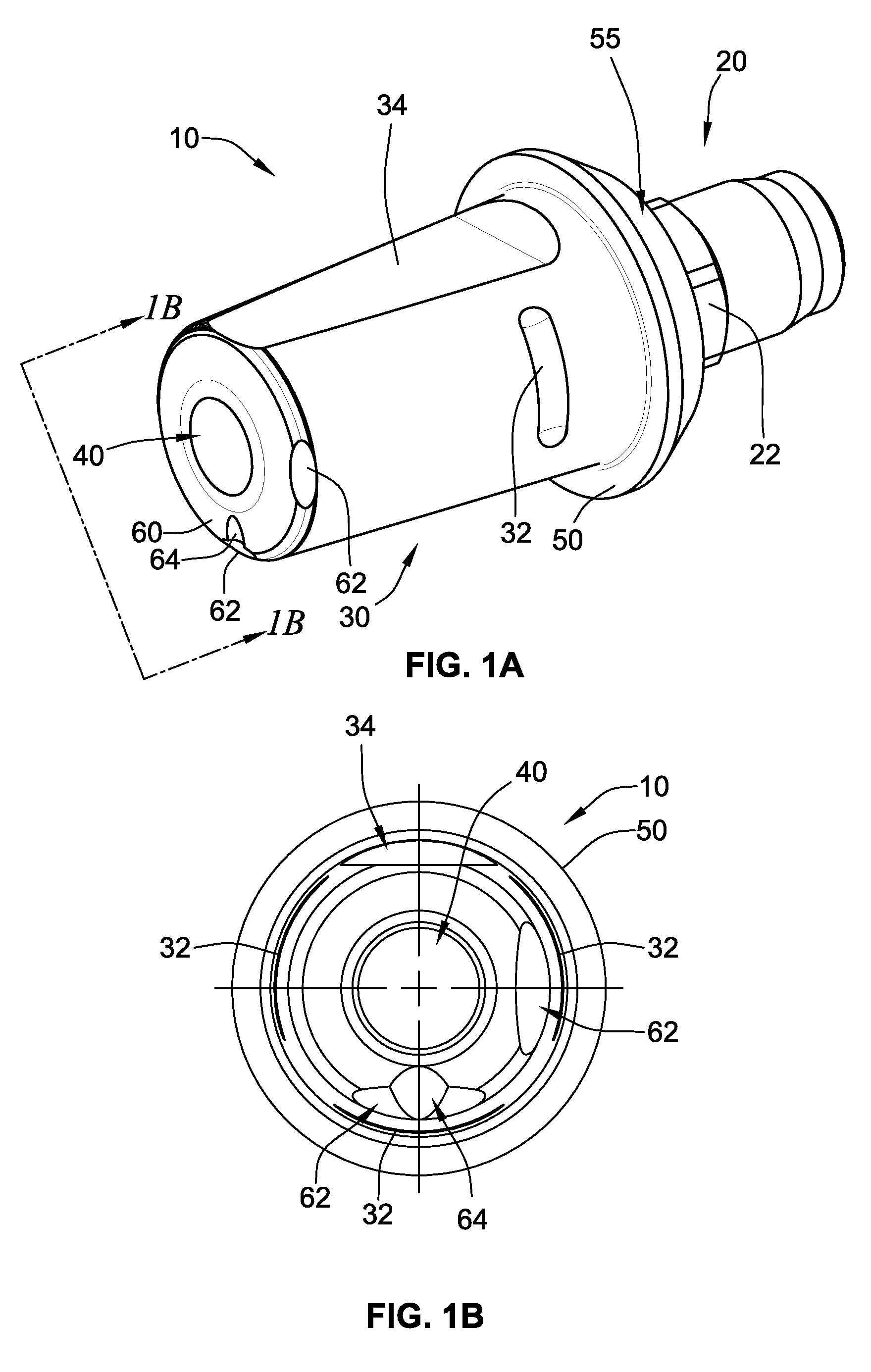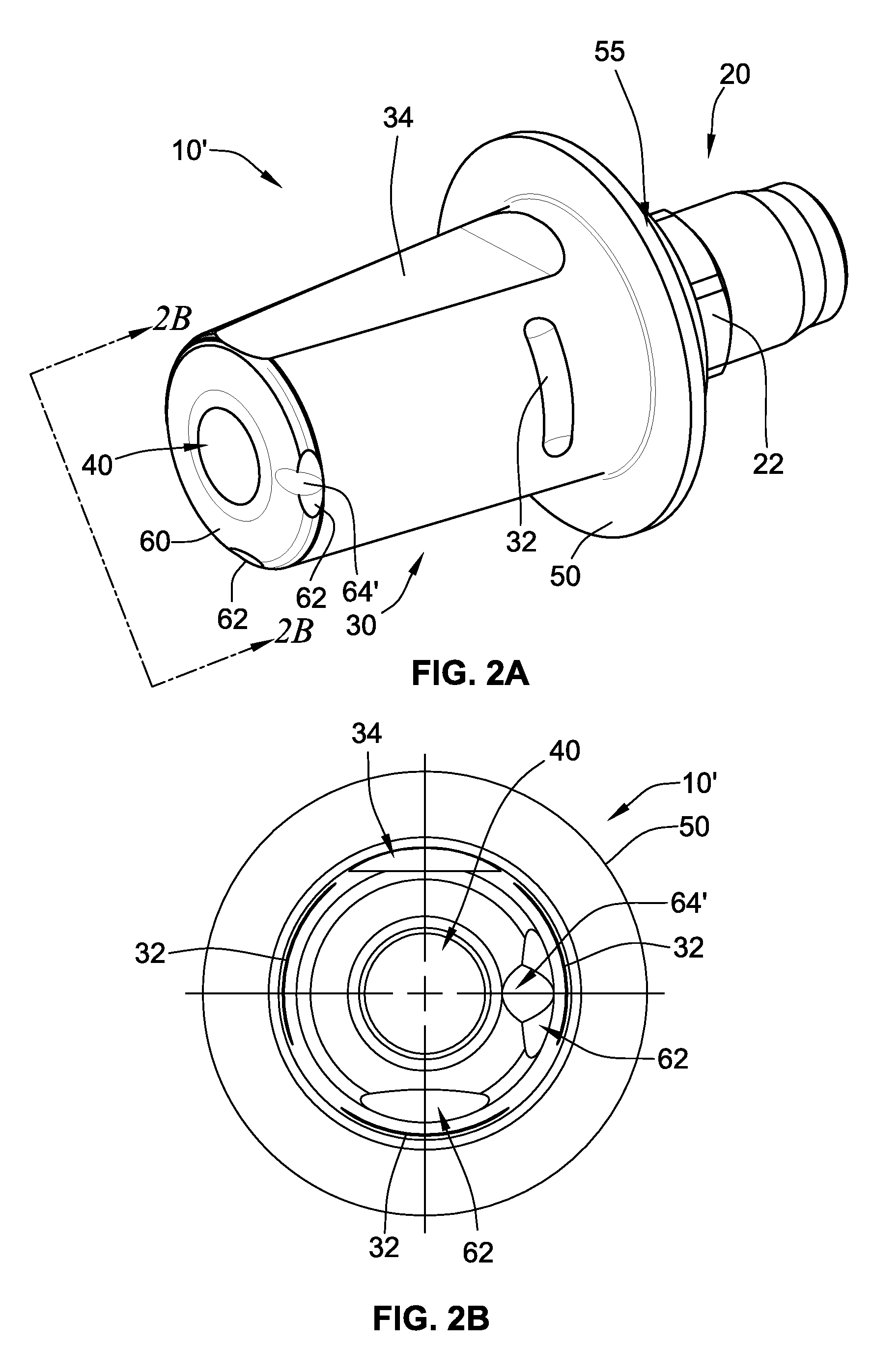Temporary abutment with combination of scanning features and provisionalization features
a technology of provisionalization and abutment, which is applied in the field of temporary abutments with scanning features and provisionalization features, and can solve problems such as discrepancies
- Summary
- Abstract
- Description
- Claims
- Application Information
AI Technical Summary
Benefits of technology
Problems solved by technology
Method used
Image
Examples
Embodiment Construction
[0041]Referring to FIGS. 1A and 1B, a temporary abutment 10 of the present disclosure (like other temporary abutments of the present disclosure) may be used for at least four purposes, which will be explained in more detail below. First, the temporary abutment 10 may serve as a gingival healing abutment as its exterior surface is contoured to aid in the healing of a patient's gingival tissue. Second, the temporary abutment 10 may serve as a temporary prosthesis (i.e., it provides a convenient mount for removably attaching an acrylic portion having an anatomical tooth shape). Third, the temporary abutment 10 serves as a scanning member to permit a clinician to use one or more scanning techniques to obtain necessary information about the underlying implant's location and orientation for use in developing permanent prosthetic components. And fourth, the temporary abutment 10 may serve as a permanent abutment providing a convenient mount for a permanent prosthesis having an anatomical t...
PUM
 Login to View More
Login to View More Abstract
Description
Claims
Application Information
 Login to View More
Login to View More - R&D
- Intellectual Property
- Life Sciences
- Materials
- Tech Scout
- Unparalleled Data Quality
- Higher Quality Content
- 60% Fewer Hallucinations
Browse by: Latest US Patents, China's latest patents, Technical Efficacy Thesaurus, Application Domain, Technology Topic, Popular Technical Reports.
© 2025 PatSnap. All rights reserved.Legal|Privacy policy|Modern Slavery Act Transparency Statement|Sitemap|About US| Contact US: help@patsnap.com



